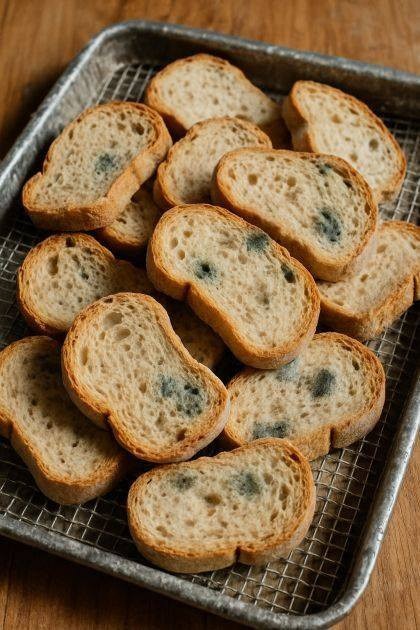There are several creative ways to bring stale bread back to life. One popular method is to sprinkle the bread with a little water and then place it in a preheated oven at 350°F (175°C) for about 10 minutes. This can help restore some of the moisture and make the bread more palatable.
Another option is to use stale bread in recipes that naturally incorporate moisture, such as French toast, bread pudding, or stuffing. These dishes can transform dry bread into a delicious meal, making the most of what might otherwise be wasted.
5. Popular Viral Hacks for Using Stale Bread
Social media is full of viral hacks for using stale bread. One popular hack involves using stale bread to make homemade breadcrumbs. Simply grind the bread in a food processor and store the crumbs in an airtight container for future use in recipes like meatballs or as a topping for casseroles.
Another trending hack is to use stale bread to make croutons. Cut the bread into cubes, toss with olive oil and your choice of seasonings, and bake until crispy. These croutons can add a delightful crunch to salads and soups.
6. Nutritional Value: Does Stale Bread Lose Its Benefits?
Stale bread retains most of its nutritional value, as the primary change is in texture rather than composition. Bread is a source of carbohydrates, fiber, and some vitamins and minerals, and these nutrients remain intact even as the bread becomes stale.
However, if the bread is enriched or fortified, some of the added nutrients may degrade over time. It’s also worth noting that the enjoyment of eating stale bread may decrease, which could affect how often you choose to consume it.
7. How to Properly Store Bread to Prevent Staleness
Proper storage is key to preventing bread from going stale. Bread should be stored in a cool, dry place, ideally in a bread box or a paper bag that allows some air circulation. Avoid storing bread in the refrigerator, as this can accelerate staleness due to the cold temperature causing the starch to crystallize faster.
If you have more bread than you can consume in a few days, consider freezing it. Wrap the bread tightly in plastic wrap or aluminum foil and place it in a freezer bag. When you’re ready to use it, thaw the bread at room temperature or toast it directly from the freezer.
8. When to Draw the Line: Signs Your Bread Is Beyond Saving
While stale bread can often be salvaged, there are times when it’s best to let it go. If you notice any signs of mold, such as fuzzy spots or an off smell, it’s time to discard the bread. Mold can spread quickly, even if it’s not visible on the entire loaf.
Additionally, if the bread has been stored for an extended period and has become extremely hard or has an unpleasant taste, it may not be worth saving. In these cases, it’s better to prioritize safety and quality over waste reduction.
SEE NEXT PAGE
ADVERTISEMENT

